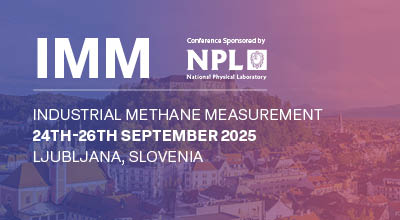| Abstract Title: | Drone-based Top-down and Bottom-up Reconciliation of Methane Emissions from an Offshore Gas Production Platform |
| Presenter Name: | Dr Stefan Schwietzke |
| Co-authors: | Dr Erin Tullos Dr Stephen Conley Dr Brendan Smith Dr Abigail Corbett Dr Ed Clay Mr Alan Gorchov Negron Mr David Hawkins |
| Company/Organisation: | Environmental Defense Fund Europe |
| Country: | Germany |
Abstract Information :
Empirical data is needed to guide industry stakeholders and policy-makers in their efforts to prioritize and effectively mitigate oil and gas industry related methane emissions. Over the past decade, many studies have developed and refined methods to provide more robust emissions data across the supply chain and gain insights into the emission sources and mechanisms. Recent studies have highlighted inconsistencies and low biases in many emission inventories, and they emphasized the contribution of measurements to drive emission reductions Alvarez et al., 2018. However, offshore oil and gas production and processing has so far received relatively little attention even though this sector accounts for about one third of global oil and gas production. The few empirical offshore studies that have been conducted so far have mostly focused on quantifying methane emissions top-down and comparing these with annualized, reported, bottom-up estimates.rnrnThis is one of the first studies of its kind to use aerial measurements at an offshore gas production platform and reconcile the resulting emission fluxes with bottom-up estimates while accounting for sub-hourly platform activity data. The latter is important for studying an individual offshore platform because of the potential limitations of snapshot measurements in the presence of episodic methane sources Foulds et al., 2022. This study will investigate the data needs - in terms of spatio-temporal measurement resolution and scope as well as platform activities - to accurately compare the top-down and bottom-up approaches. The aerial surveys in this study included independent measurements from a fixed-wing drone and a rotor drone equipped with in-situ methane sensors and integrated wind measurements. The aerial surveys were performed during four days at the facility-scale fixed wing drone as well as sub-facility-scale rotor drone. Our data analysis will characterize the potential trade-offs between both approaches in terms of robustly quantifying total emissions and delivering insights for mitigation opportunities. Both are important for ongoing efforts by platform operators to accurately quantify emissions and set and meet mitigation targets under regulatory or voluntary programs such as the Oil and Gas Methane Partnership 2.0.rnrnReferences:rnAlvarez, R. A., D. Zavala-Araiza, D. R. Lyon, D. T. Allen, Z. R. Barkley, A. R. Brandt, K. J. Davis, et al. 2018 Assessment of Methane Emissions from the U.S. Oil and Gas Supply Chain. Science. doi:10.1126science.aar7204.rnrnFoulds, A., Allen, G., Shaw, J. T., Bateson, P., Barker, P. A., Huang, L., Pitt, J. R., Lee, J. D., Wilde, S. E., et al. 2022 Quantification and assessment of methane emissions from offshore oil and gas facilities on the Norwegian Continental Shelf, Atmos. Chem. Phys. https:doi.org10.5194acp-2021-872, accepted.

